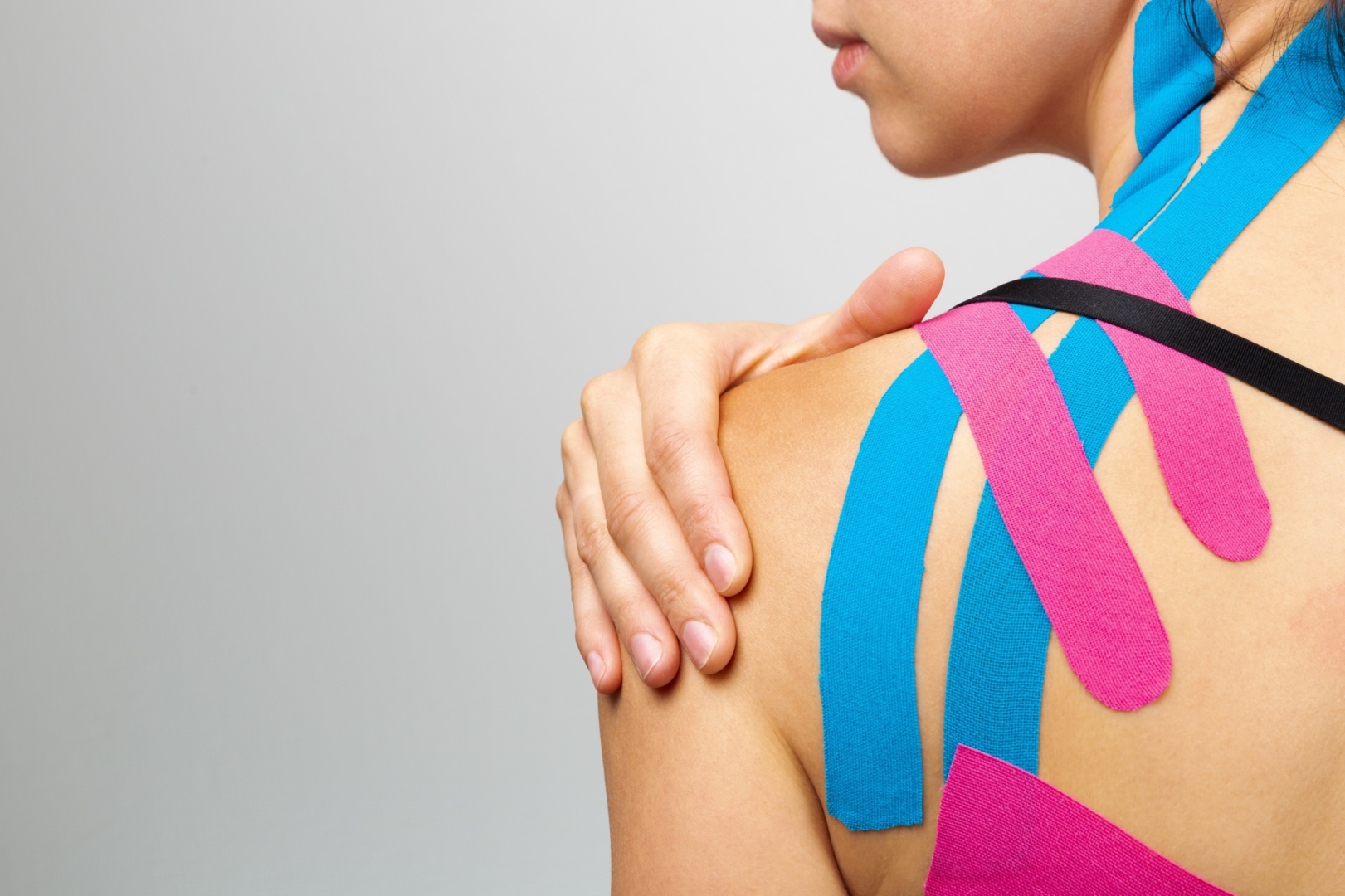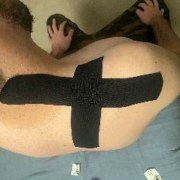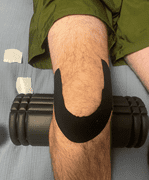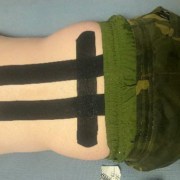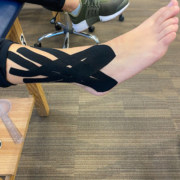It’s very likely you’ve seen Kinesio tape being used, from the elite level of sport right down to weekend warriors, or even non-athletes needing help with their rehabilitation. Let’s explore why so many people use it.
What is Kinesio tape – and why do so many athletes use it?
What is that colourful tape many athletes have on? That is Kinesio tape. Kinesio tape has been around since the 1970s when a chiropractor by the name of Kenzo Kase invented the tape and brought it into the athletic world. It was initially invented with the intent to allow more freedom of movement for the athlete, with the same amount of support as athletic tape.
Since its inception almost 50 years ago, Kinesio tape has been popularised in the mainstream with high-profile athletes across the globe seen wearing it. Now, multiple brands have entered the market – a quick Google search for Kinesio tape reveals hundreds of unique styles and colours to choose from.
In short, Kinesio tape is a form of athletic tape which can be stretched past its original length and provide myriad proposed benefits to positively affect performance and pain levels. This is done through the stretch of the tape, which is a combination of cotton and nylon made to mimic the elasticity of our skin.
The main proposed benefits of Kinesio tape include reduction of pain, protection of weak areas, increased sensory input and improved performance. With this, Kinesio tape can be utilised by athletes and rehabilitation professionals as a potential tool in order to decrease recovery time.
So it’s very likely you’ve seen Kinesio tape being used from the elite level of sport right down to weekend warriors, or even non-athletes needing help with their rehabilitation. Let’s explore why so many people use it.
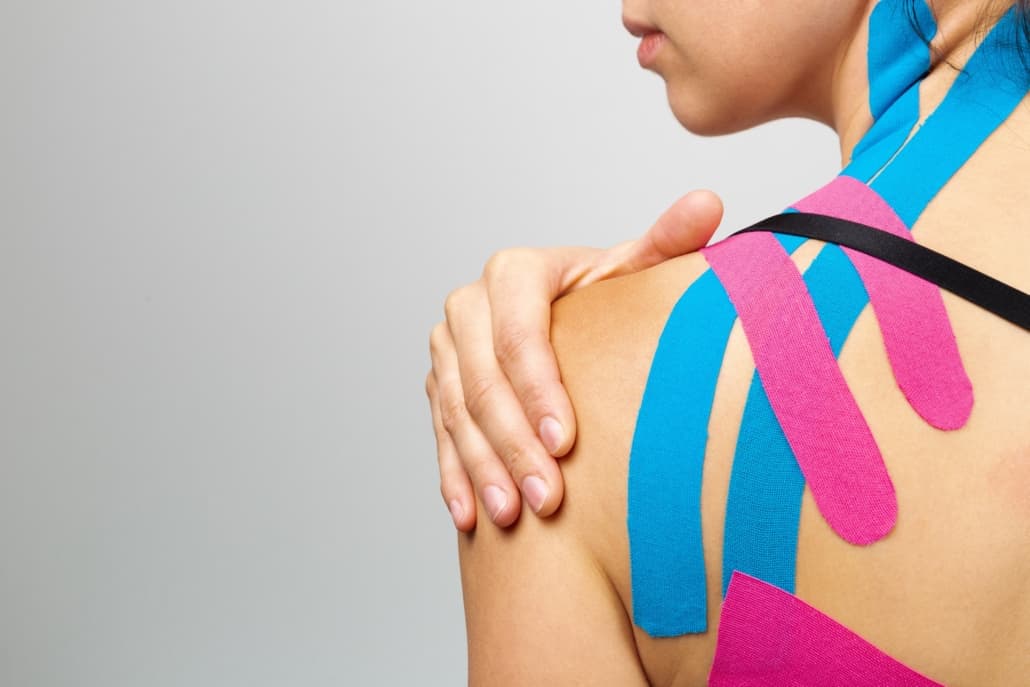
Various uses of Kinesio tape
The ‘stretch and lift’
Kinesio tape can stretch to anywhere between 100-180% of its original length. That is what really sets it apart when it comes to other tapes in sports and rehabilitation. The stretch not only allows it to contour to different body parts, but it creates a recoil of the skin. This recoil acts to pull the skin closer from the tape’s origin site to where it ends.
With this, a small lift or decompression of the skin is created which relieves pressure on the area where the tape is applied. This proposed lift may allow the associated muscles, joints and tendons to have more room for smoother contraction and stretch.
Decompression and pain
The proposed decompression of the skin can lead to a number of positive influences on it. Relief from pressure is first and foremost. Within our skin and underlying tissues, we have a multitude of receptors including those responsible for pain. By relieving the pressure in between the skin layers, we change or dampen the pain signal that goes from our skin to our brain.
Along with this, the decompression allows fluids underneath the skin like blood and lymphatic fluids (vital in the recovery process) to circulate more freely without as much interruption.
Sensory Input and Performance
The lift of the skin can change what information gets to the brain, including pain input as stated previously. This change can potentially help in decreasing the feelings of tightness in muscles or pain from associated trigger points in muscles. Along with these, some athletes believe having the tape on their skin acts as protection – knowing the tape is present on an injured area may allow some athletes to feel more confident in their abilities to overcome the injury.
Among some practitioners and rehabilitation professionals, there is a belief that Kinesio tape can also provide an actual improvement in performance. This may occur from the Kinesio tape providing support along with slight pressure to unstable joints or painful muscles. This feeling of pressure can help to facilitate muscle contraction as well and make the athlete feel stronger.
Although this may be felt from a subjective perspective, there is a lack of evidence-based research on Kinesio tape’s positive effect on performance.
Support
The same can also be said for supporting weaker areas of the body. The tape provides extra support with a joint’s normal movement – this may help to support fatigued areas and protect them from further injury or compensatory patterns.
It can also provide support for tendons, which take on the load from our bodies and forces from the ground. The patellar tendon is a common source of pain for athletes who run and jump, along with individuals who sit for prolonged periods of time. Tape can be applied to lift and support the patella, and acts similar to a patellar strap or brace.
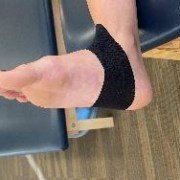
Another common area for support taping is on the foot. With flat feet or lower arches, the navicular bone, which is located on the inside of the foot, sits lower than it should secondary to the height of the arch. A sling can be used to ‘lift’ the navicular and subsequently lift the arch. This adds support and protection to the foot.
Body awareness
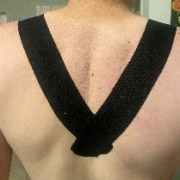
Kinesio tape is applied to provide feedback on where our body and posture are situated in space. This is through proprioceptive input, which helps our bodies understand where they are positioned. Rehabilitation professionals will use the tape to cue a patient or client
to keep them in a corrective position or posture. An example of this is on the upper back and posterior shoulders – Kinesio tape is placed in an X fashion from the top of the shoulder toward the spine in a downward direction and crossed.
This will allow the tape to pull and create a feeling of a stretch when the patient rolls into a forward head/rounded shoulders position. This acts to pull the patient back to a scapular retracted and upright posture.
Another example is lower back pain. Kinesio tape is placed on the muscles of the lumbar spine while the spine is flexed in order to provide feedback for people who may slump over in their chairs or while standing.
Again, the Kinesio tape is acting as a reminder to stay more upright and out of positions that can cause pain with the stretch of the tape.
Swelling
Kinesio tape can be cut and manipulated in order to promote a reduction in swelling in various areas of the body. The target for the tape is an injured area that is swollen and may be discoloured. The tape is cut in a crossover pattern with strips that mimic lymphatic channels.
The idea here is the tape provides the lift of the skin which creates space in between the layers of skin. This changes the pressure gradient in those layers of skin which enhances the flow within the lymphatic system. These channels run through our connective tissue and allow our body to deal with excess fluid.
This can be beneficial with acute and chronic injury as well as recovering from strenuous exercise and training.
Scar management
Kinesio tape can be placed on and around closed scars for a multitude of reasons such as improving aesthetics, decreasing pain and improving the pliability of the scar. Scars that are present after an injury or surgical procedure become an interruption in the skin’s layers which affects how the soft tissue in and around it contracts and stretches. This can affect your range of motion in the associated area, which can also have an effect on your strength.
Taping over and/or around a closed scar introduces a shearing or massage effect to all the layers of the scar. With this, we can also affect the surrounding tissue and have an effect on the overall movement of the associated extremity or region. The goal here is to encourage proper alignment of the tissues affected in and around the scar. It is important to know you should not place tape over open wounds or immature scars that are less than six weeks post-injury.
Nerve entrapment
Our nervous system has a unique relationship to our muscular system. For a number of reasons, a nerve can become irritated and/or compressed and impact the muscles it supplies sensory and motor function to. This can cause pain, weakness and numbness, or tingling in the leg or arm depending on the nerve affected. The tape can be applied along the length of the nerve, from its most proximal to distal point in a stretched position. Through this, the skin is lifted, allowing the nerve to glide and slide smoother in the track that it runs through.
In essence, this helps to decrease the irritation allowing for improved function. It may be difficult to perform this technique without the help of a rehabilitation professional.
What is Kinesio tape not intended for?
Kinesio tape is not intended to be used for the following conditions, due to the risk of infection, allergic reaction or blood flow changes within these conditions:
- Open wounds
- DVT
- Active cancer
- Diabetes
- Adhesive allergy
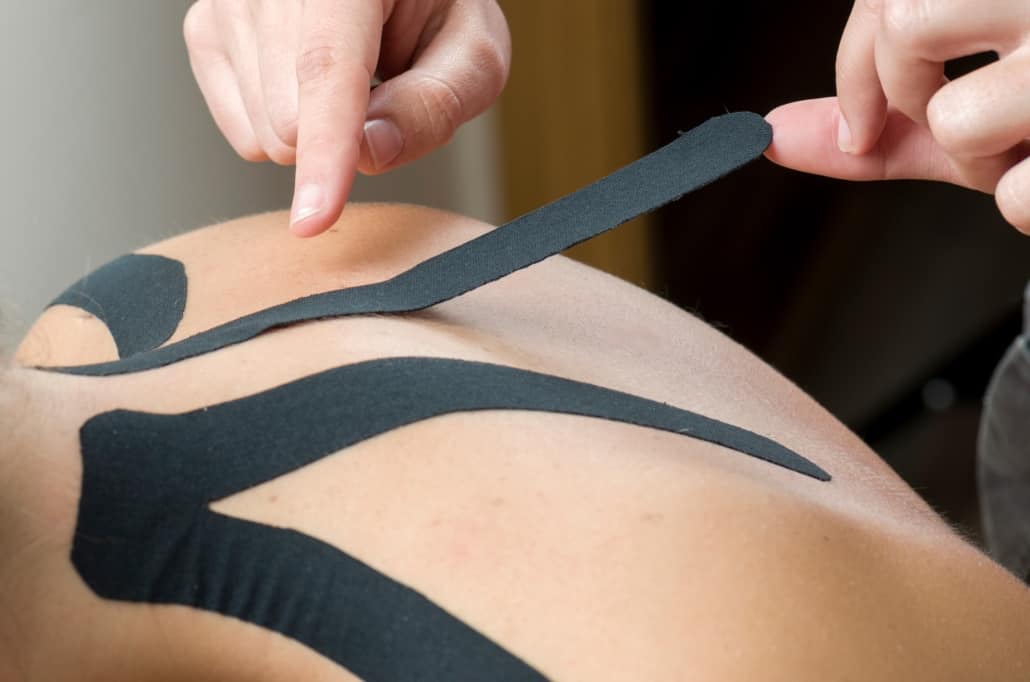
How to use Kinesio tape?
Kinesio tape has many uses as noted above. But first of all, always consult with a physical therapist or athletic trainer who is trained in the use of the tape before using it.
When it comes to putting on the tape, there are a few helpful reminders to maximise its use.
- Clean and dry the area first. Avoid the use of lotion or oil in the area prior to taping, as these products can prevent the tape from sticking to the skin for a longer period of time.
- Trim any excess hair in the area.
- Before cutting the tape, measure the area first. The tape will stretch but it is a good idea to account for the full length of the area.
- Cut rounded corners at the ends of each strip, which helps to contour easier to the skin and allows it to stay on longer.
- Tear the back paper of the tape to use. Try not to touch the adhesive portion of the tape with your fingers.
- Take the paper off the end piece and lay it down at the desired origin. With your fingers at the base, peel back the paper and stretch the tape 50-75% while laying it onto the skin. Once the tape is stretched properly, lay the tape down but keep the end portion off the skin. Lay down the end of the tape without stretching.
- Lay down the origin piece, stretch the middle up to 50-75% and lay down the end without stretch.
- After you apply the tape, rub each end vigorously to improve the adhesive material to stick
- Additional pieces may be added for different functions. For example, a compression piece can be added at the painful point of the segment. This is used by tearing the paper at the midpoint and laying the tape down side to side with the same principles with stretch as noted above.
For a visual example of how to use Kinesio tape, check out this video.
How to use Kinesio tape for rehab and sport?
Kinesio tape can be greatly beneficial to both the rehabilitation professional and the athlete. When used correctly, it has the potential to decrease pain and swelling, provide feedback and protect injured areas. Although full conclusive evidence is lacking, Kinesio tape is a treatment that has survived and thrived in the rehabilitation world. It is primarily used by physical therapists, athletic trainers and chiropractors to help their patients and athletes return to their prior level of function.
For most practitioners, Kinesio tape has its place as a tool in the toolbox. It is not a way to completely solve the problem, but it can be used to speed up the recovery time. Just like anything in rehabilitation, it should not be used over a consistent time lasting all season. Kinesio tape is meant to be a temporary solution (lasting 3-5 days for single use) for athletes and patients when dealing with an acute injury – they cannot 100% rely on it to get them to their goal. Our bodies need to stress our systems; constant protection does not let us adapt and will not solve our injuries.
That being said, Kinesio tape has many proposed benefits. Although it may not be the correct mode of treatment for everyone, it is something that rehabilitation professionals and athletes should try.
